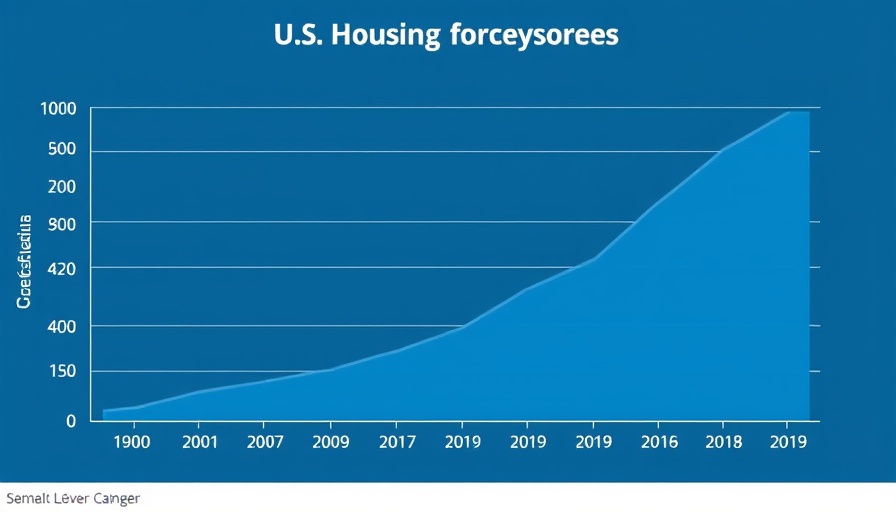
The Return of Foreclosures: An Emerging Housing Crisis
As the housing landscape shifts once more, the resurgence of foreclosures is catching the attention of market analysts and homeowners alike. The Federal Reserve Bank of New York reported a startling 40% increase in foreclosures year-over-year, with 61,660 cases recorded in Q1 of 2025. While this figure still falls short of pre-pandemic levels, which peaked at 71,040 in Q1 2019, the trend is a warning sign of potential financial instability for many households.
Historical Context: Understanding the Trends
To comprehend the current climate, it's essential to remember the foreclosure moratorium enacted during the COVID-19 pandemic. This policy was a protective measure intended to shield homeowners from financial ruin as job losses surged. Such interventions, coupled with an unprecedented boom in housing demand, kept foreclosures at bay as property values skyrocketed. However, now that these protections have lapsed, many are grappling with the consequences.
Delinquency Rates: A Key Indicator
Monitoring mortgage delinquency is crucial to anticipating foreclosure trends. Currently, delinquencies of 90 days or more on household mortgages are significantly lower than they were prior to the pandemic. This indicates a resilient segment of homeowners. However, rising credit card and auto loan delinquencies may signal broader economic distress, which could eventually translate into mortgage failures if not addressed.
Future Predictions: What Lies Ahead for Homeowners?
Looking ahead, experts are concerned about the potential for further increases in foreclosures. The expiration of various protections has left many vulnerable. A deep dive into the current market indicators will be pivotal in determining whether this trend will continue throughout 2025 and into 2026.
Taking Action: How to Prepare for Potential Challenges
As homeowners and small business owners navigate these uncertain times, understanding their financial landscape becomes crucial. For those with existing loans, it’s advisable to remain vigilant about equity positions and explore flexible repayment options with lenders. Furthermore, developing a strategic planning framework can help manage potential dips in sales and credit availability.
An Opportunity for New Strategies
The current climate also presents opportunities for innovation. Building a strategy around financial literacy and planning can empower homeowners and small business owners alike to make informed decisions. By leveraging technology and data, borrowers can better assess their options and develop tailored solutions to their unique situations, hopefully staving off the looming risk of foreclosure.
 Add Row
Add Row  Add
Add 

 Add Row
Add Row  Add Element
Add Element 




Write A Comment